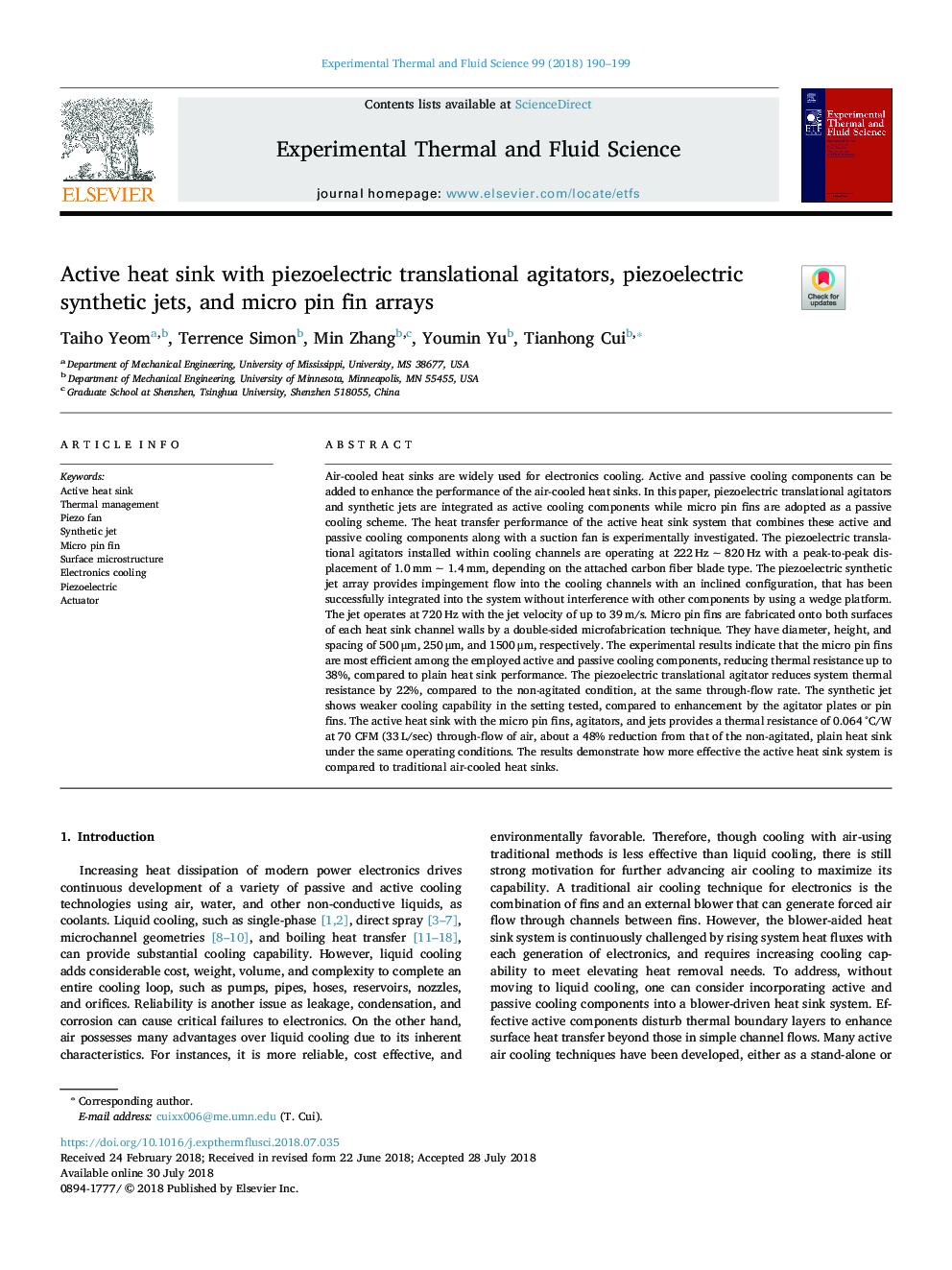| Article ID | Journal | Published Year | Pages | File Type |
|---|---|---|---|---|
| 7051450 | Experimental Thermal and Fluid Science | 2018 | 10 Pages |
Abstract
Air-cooled heat sinks are widely used for electronics cooling. Active and passive cooling components can be added to enhance the performance of the air-cooled heat sinks. In this paper, piezoelectric translational agitators and synthetic jets are integrated as active cooling components while micro pin fins are adopted as a passive cooling scheme. The heat transfer performance of the active heat sink system that combines these active and passive cooling components along with a suction fan is experimentally investigated. The piezoelectric translational agitators installed within cooling channels are operating at 222â¯Hzâ¯â¼â¯820â¯Hz with a peak-to-peak displacement of 1.0â¯mmâ¯â¼â¯1.4â¯mm, depending on the attached carbon fiber blade type. The piezoelectric synthetic jet array provides impingement flow into the cooling channels with an inclined configuration, that has been successfully integrated into the system without interference with other components by using a wedge platform. The jet operates at 720â¯Hz with the jet velocity of up to 39â¯m/s. Micro pin fins are fabricated onto both surfaces of each heat sink channel walls by a double-sided microfabrication technique. They have diameter, height, and spacing of 500â¯Î¼m, 250â¯Î¼m, and 1500â¯Î¼m, respectively. The experimental results indicate that the micro pin fins are most efficient among the employed active and passive cooling components, reducing thermal resistance up to 38%, compared to plain heat sink performance. The piezoelectric translational agitator reduces system thermal resistance by 22%, compared to the non-agitated condition, at the same through-flow rate. The synthetic jet shows weaker cooling capability in the setting tested, compared to enhancement by the agitator plates or pin fins. The active heat sink with the micro pin fins, agitators, and jets provides a thermal resistance of 0.064â¯Â°C/W at 70 CFM (33â¯L/sec) through-flow of air, about a 48% reduction from that of the non-agitated, plain heat sink under the same operating conditions. The results demonstrate how more effective the active heat sink system is compared to traditional air-cooled heat sinks.
Keywords
Related Topics
Physical Sciences and Engineering
Chemical Engineering
Fluid Flow and Transfer Processes
Authors
Taiho Yeom, Terrence Simon, Min Zhang, Youmin Yu, Tianhong Cui,
